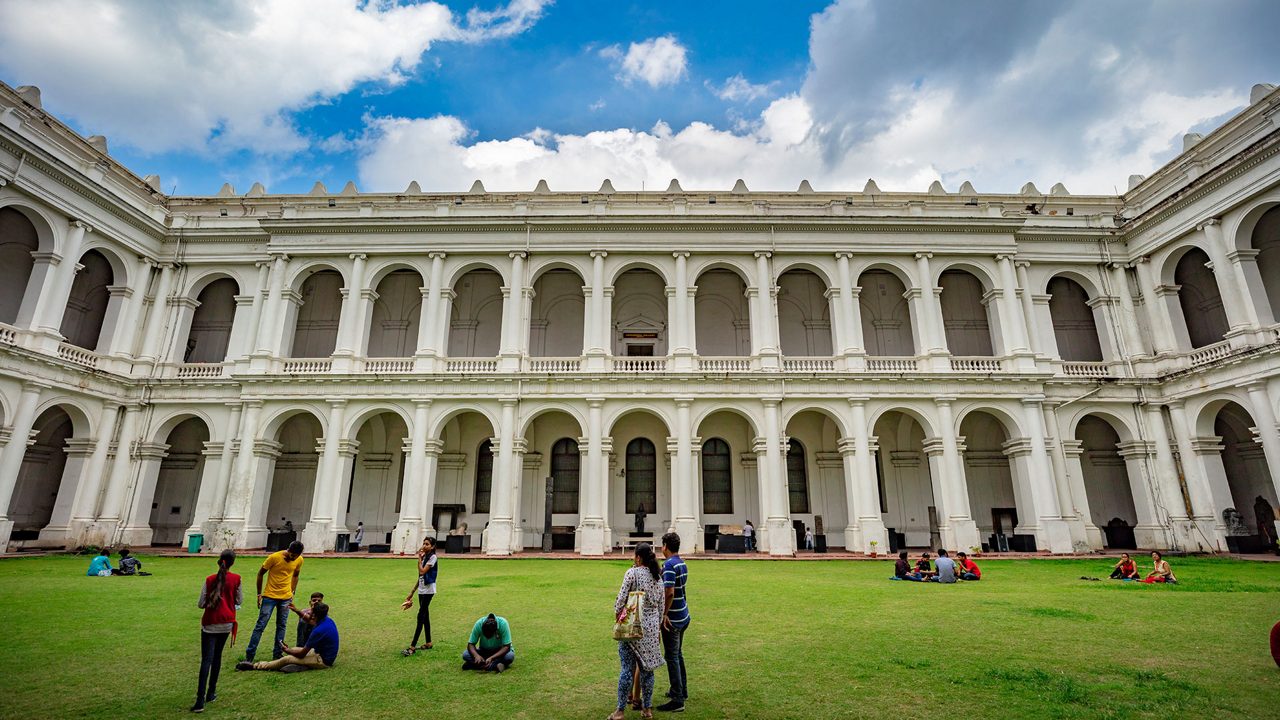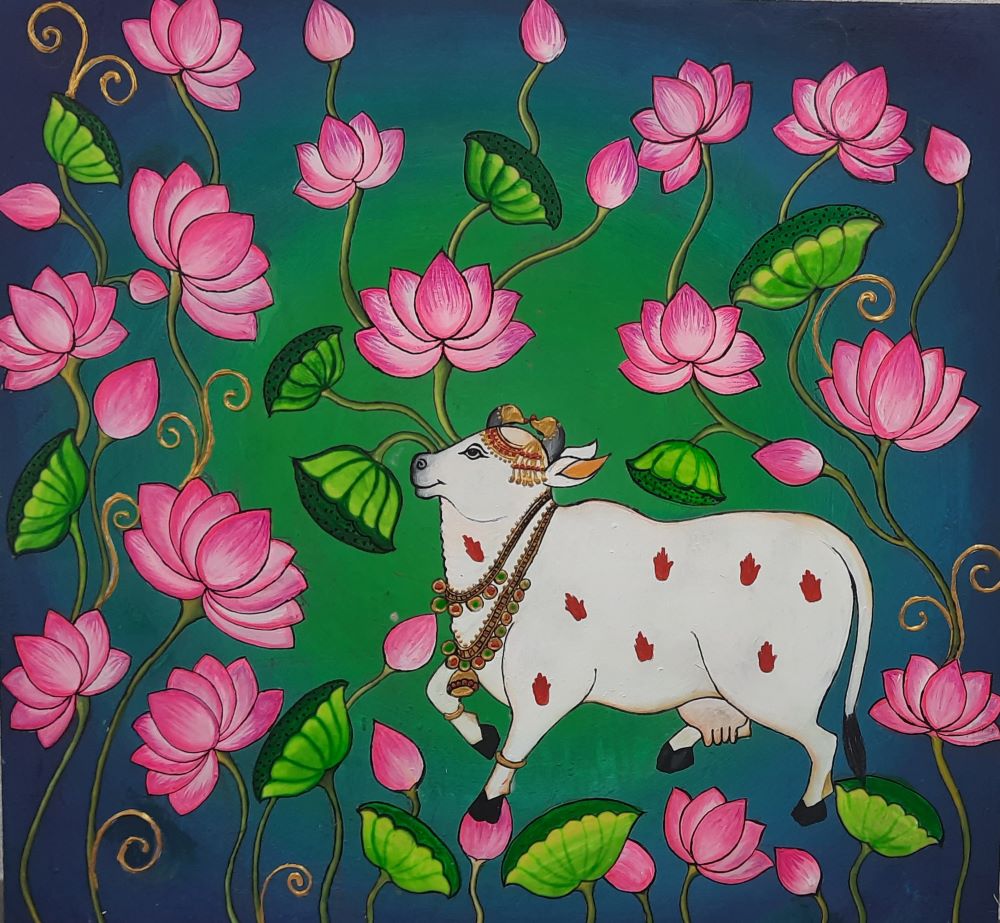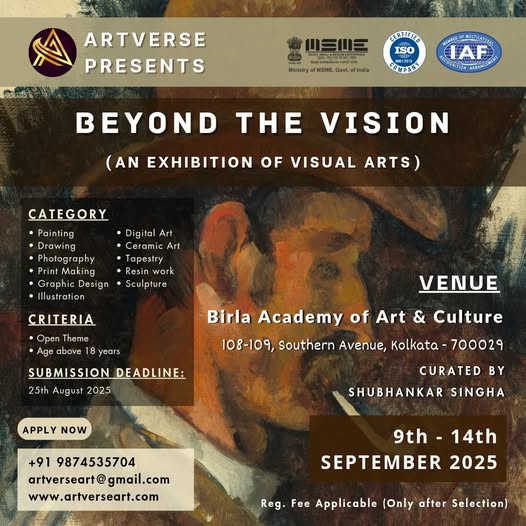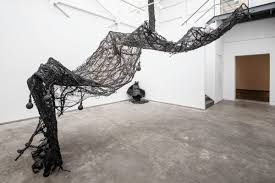
Menu

Pichwai paintings are a traditional and highly intricate art form that originated over 400 years ago in Nathdwara, a temple town in Rajasthan. These paintings are deeply rooted in the worship of Lord Krishna, especially in his child form as Shrinathji, and are typically displayed as decorative backdrops (or “pichwai” meaning “at the back”) in temples and homes.
Each Pichwai painting tells a devotional story, often linked to specific festivals and rituals. Artists depict various episodes from Krishna’s life—such as Govardhan Leela, Raas Leela, and Janmashtami—using rich symbolism and detailed imagery. The paintings also celebrate the changing seasons and daily rituals performed in honor of the deity.
Traditionally, Pichwai paintings are done on handwoven cloth using natural colors derived from indigo, gold, silver, coal, and vegetable dyes. The artwork is highly stylized, with symmetrical compositions and delicate features. Common elements include lotus flowers, cows, peacocks, trees, and gopis (Krishna’s devotees), all arranged around the central figure of Shrinathji.
Creating a Pichwai is a labor-intensive process, often taking weeks or even months. Artists meticulously layer colors and details, and gold leaf is sometimes added to give the painting a divine glow. While the traditional style remains popular, contemporary artists have begun experimenting with new themes, materials, and formats, bringing this sacred art into modern homes and galleries.
More than just an art form, Pichwai painting is a spiritual offering—intended not just to beautify a space, but to create a sacred atmosphere and express deep devotion. The enduring appeal of Pichwai lies in its ability to blend art, faith, and storytelling into a visual experience that continues to inspire across generations.



